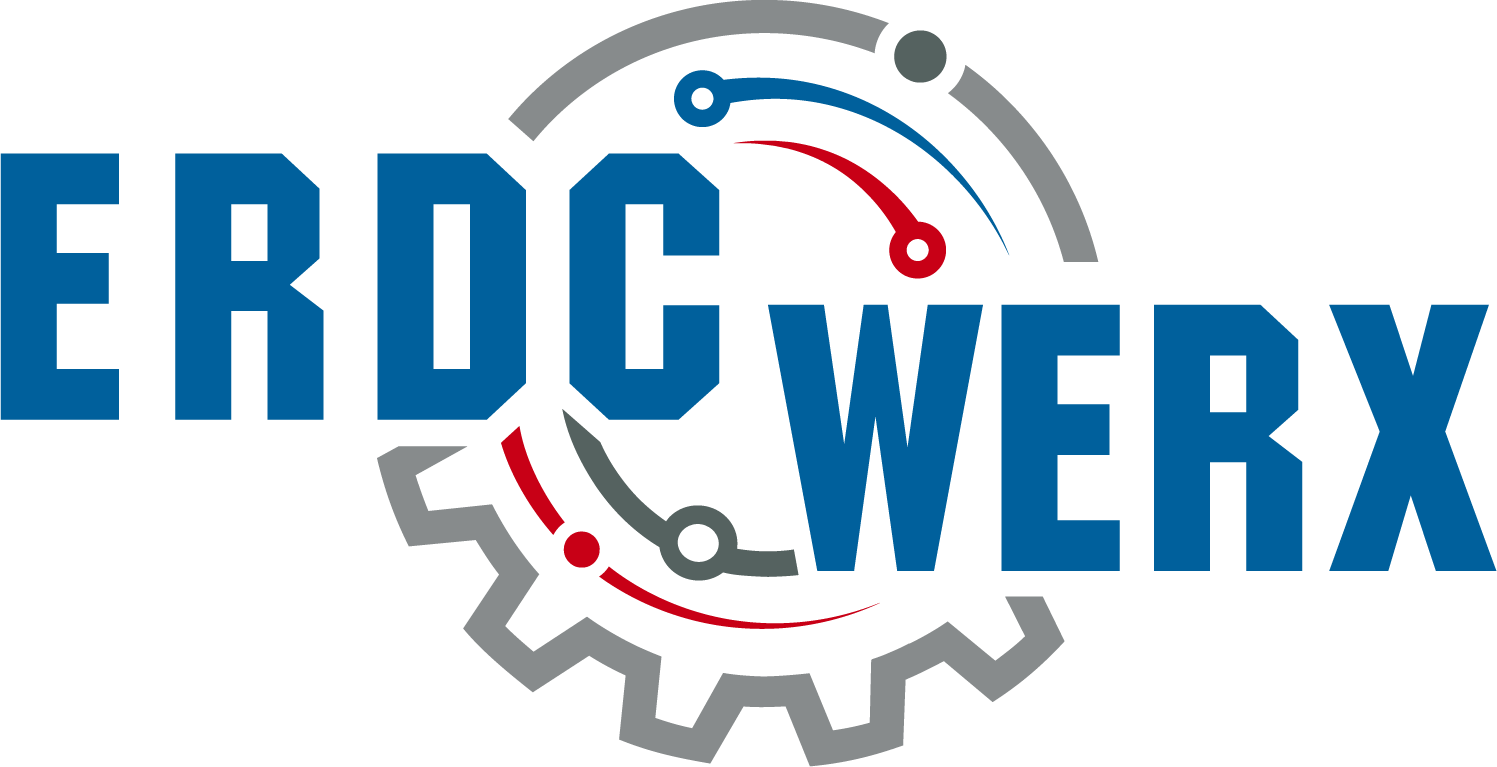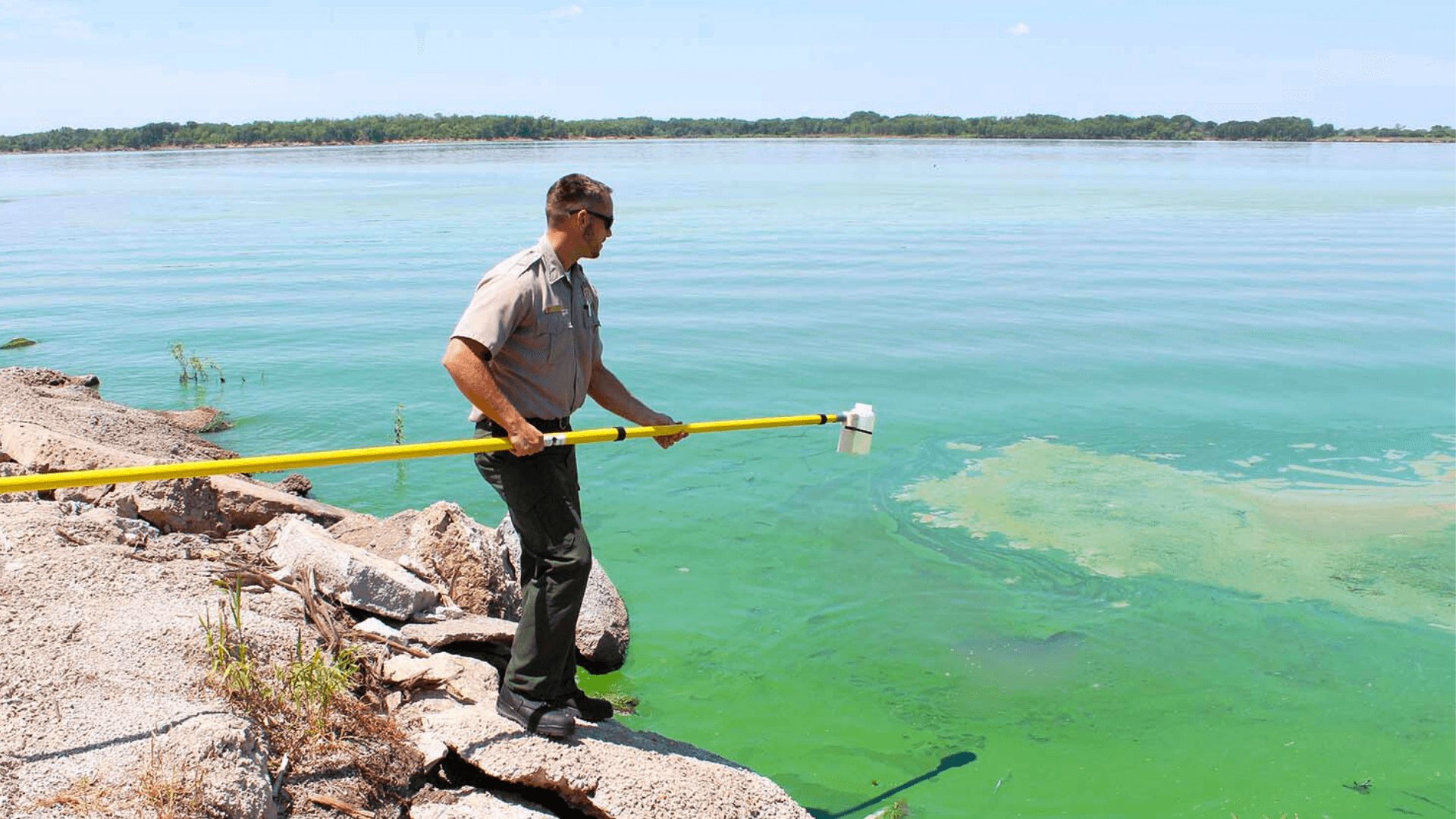Overview
The U.S. Army Engineer Research and Development Center (ERDC) Environmental Laboratory (EL) seeks expert technical support and demonstration of scalable freshwater Harmful Algal Bloom (HAB) prevention, detection, and management technologies. The goal of this effort is to identify solutions capable of reducing the severity and frequency of HABs impacting U.S. Army Corps of Engineers (USACE) water resources development projects and other freshwaters across the Nation as authorized in the Water Resources Development Act (WRDA) of 2020, Section 128.
Background
Harmful Algal Blooms (HABs), which can be caused in freshwater by various cyanobacteria, represent a significant and costly threat to our Nation’s economy and natural resources. HABs impact waterways, infrastructure, operations, and associated resources nationwide. Innovative, cost-effective, and scalable technologies for early detection, prevention, and management of HABs are needed.
This project focuses on the field demonstration of innovative HAB detection, prevention, and management technologies, or combinations of technologies, that have been successfully demonstrated at lab or pilot scales. To reduce the frequency and severity of HAB impacts to our Nation, these technologies must be cost-effective, scalable, and applicable for use in varied freshwater system types (e.g., lotic, lentic) and varied climatic ecoregions. This program will generate defensible technology cost and performance data to guide optimal technology use and implementation at field scale. Technologies that focus exclusively on water quality or drinking water are not the focus of this demonstration program.
Project Manager
Environmental Laboratory (EL), U.S. Army Engineer Research and Development Center (ERDC)
Objectives
The primary objectives of project are to:
- Significantly reduce the frequency and effects of HABs associated with water resources development projects
- Demonstrate innovative technologies or combinations of technologies for HAB prevention or management at large field scales
- Generate field-scale cost and technology performance data to guide informed technology use and support technology transfer
Requirements
ERDC invites pre-proposals that must meet the following eligibility and other requirements:
- A field validation project may be implemented anywhere in the Nation to address a HAB associated with a water resources development project. Preference will be given to projects located in the fourteen focus areas: (i) the Great Lakes; (ii) the tidal and inland waters of the State of New Jersey, including Lake Hopatcong, New Jersey; (iii) the coastal and tidal waters of the State of Louisiana; (iv) the waterways of the counties that comprise the Sacramento-San Joaquin Delta, California; (v) the Allegheny Reservoir Watershed, New York; (vi) Lake Okeechobee, Florida; (vii) the Caloosahatchee and St. Lucie Rivers, Florida; (viii) Lake Sidney Lanier, Georgia; (ix) Rio Grande River Basin, Colorado, New Mexico, and Texas; (x) lakes and reservoirs in the State of Ohio; (xi) the Upper Mississippi River and tributaries; (xii) Detroit Lake, Oregon; (xiii) Ten Mile Lake, Oregon; and (xiv) the coastal waters of the United States Virgin Islands.* *The Water Resources Development Act of 2022 (WRDA 2022 Sec 8305) added focus areas to the 6 initially listed in the original WRDA 2020 Sec 128 HAB Demonstration Program authorization, resulting in the 14 listed here.
- The proposed project must be for the purpose of determining the causes of, and/or applying technologies to effectively detect, prevent, manage, or eliminate, HAB. The project must include the gathering and evaluation of technology cost and performance data that will guide technology use and support technology transfer.
- The proposed project should provide data that could be applied at multiple water resources development projects or federally constructed reservoirs in the Upper Missouri River Basin or the North Platte River Basin and could be expanded at a larger scale than the proposed demonstration per the implementation guidance.
- The applicants may propose to use technology developed by the Corps under Section 1109 of WRDA 2018 (i.e., the Freshwater Harmful Algal Bloom Research and Development Initiative) or other viable technologies with legal authority and ability to be permitted and applied under appropriate federal laws.
- Applicants are responsible for conducting work under applicable laws and regulations and obtaining all necessary federal, state, and local permits to include coordination with ERDC and the responsible USACE Districts for an assessment of environmental effects of any proposed action to a specific site.
- Applicant team comprises range of competencies required for successful large field‑scale demonstration and expertise to quantify performance and cost (e.g., field practitioners with experience applying or utilizing proposed technology or combinations of technologies; scientists and engineers with experience quantifying dosing, reaction times and rates; algal phycologists or other experts with experience identifying and enumerating cyanobacteria and characterizing HABs).
Not required, but highly desired:
- Applicants are encouraged to submit evidence of previous successful laboratory or pilot-scale field demonstrations of the technologies proposed. This opportunity is intended to support field-scale demonstrations, not research and development.
- Successful pre-proposals will identify quantitative and qualitative success criteria for each project task and objective; identification of go/no-go decision points at the end of each year (if proposing a multi‑year project).
Applicants must be registered on SAM.gov. The Purpose of Registration on SAM.gov should reflect all awards.
Note: Submissions should NOT include confidential or proprietary details. Submissions may be shared with other ERDC teams if there is an apparent fit with other ERDC projects.
Estimated Government Funding Profile
- The maximum total funding available for all awards under this announcement is $9,000,000.
- The Government may elect to award up to ten (10) awards. Multi-year proposals may be submitted.
- The Government may elect to award all years for selected projects or only the first year(s) of selected projects, depending on proposals received.
*This maximum total funding available amount may change dependent upon availability of funds in the fiscal year 2025 budget.
Estimated Period of Performance
12 months after award date for single year awards; 24 months or longer for multi-year awards
Desired End State
- Reduced HAB intensity or impact in the waterbody where technology demonstration occurs.
- Electronic database of technology demonstration performance data gathered for each project and technology; provides end-users with access to data used to generate results, including key figures and tables in the final demonstration report.
- Final demonstration project reports, which document how each technology or combination of technologies demonstrated in a freshwater body performed against established objectives identified in the proposal and in the approved work plan; also documents cost of the technology demonstration and includes a cost section in the final report, which outlines key consideration for others seeking to utilize the demonstrated technology in a different freshwater or estuarine system.
- Published performance data on HAB prevention and management technologies to aid in applicability determination for field site use. For each technology, published demonstration data should inform why it worked, how it worked, and how the technology was deployed so that informed decisions can be made in regard to future use at other sites.
Evaluation Criteria
Submissions will be evaluated based on the criteria described in the CSO Solicitation document. Additional criteria specific to this project are listed below:
- Technical Merit – Feasibility and applicability of proposed solution to the requirements and objectives detailed in this Individual Program Requirement (IPR)
- Alignment with selection criteria identified in the Implementation Guidance for Section 128 of the Water Resources Development Act of 2020, Harmful Algal Bloom Demonstration Program Section 4.f.
- Importance to Agency Programs – Will assess the solution’s potential to enhance the mission effectiveness of the agency
- Funds Availability – Will assess the availability of funding to procure the solution
All interested parties are encouraged to review the Implementation Guidance prior to developing application package.
Evaluations will be conducted by ERDC and USACE subject matter experts and may be shared as appropriate with other ERDC parties.
All resultant contracts will be firm-fixed price. All items, technologies, and services (including research and development) procured via this CSO are treated as commercial. Applicants from universities and/or non-profit organizations should be aware that commercial clauses will be integrated into the award and should coordinate proposals with associated legal counsel prior to submission.
Notional Project Schedule
Proposed project milestones include:
| November 22, 2024 | Submissions Open |
| January 17, 2025 | Question Period Ends |
| February 7, 2025 | Submissions Close (Deadline Extended) |
*If needed; dates may vary to accommodate project team and participant availability.
Project Security Classification
Unclassified
How to Participate
Qualified parties may submit by completing a submission form and uploading required documentation as defined in the CSO Solicitation document.
1. Review CSO Solicitation document
2. Review FAQs
3. Complete the submission form
Submission Instructions:
This solicitation is issued consistent with the authority granted to the U.S. Army Engineer Research and Development Center (ERDC) through the establishment of its Commercial Solutions Opening (CSO), W912HZ25SC001. Submissions must follow the requirements as detailed in the CSO Solicitation document.
Questions:
Interested parties may submit questions using this form until January 17, 2025.
Submissions must meet stated requirements and be received no later than 4:00 pm CT on Friday, February 7, 2025.
ERDC-EL is conducting this project announcement on a full and open basis and intends to award contracts in accordance with FAR part 12 and the FAR part that is deemed most appropriate for the solution proposed (i.e. FAR part 13, 15, and/or 35); the government reserves the right to award prototype agreements (e.g. Other Transaction Agreements), in accordance with 10 U.S.C. 4022, if deemed appropriate and in the government’s best interest.


